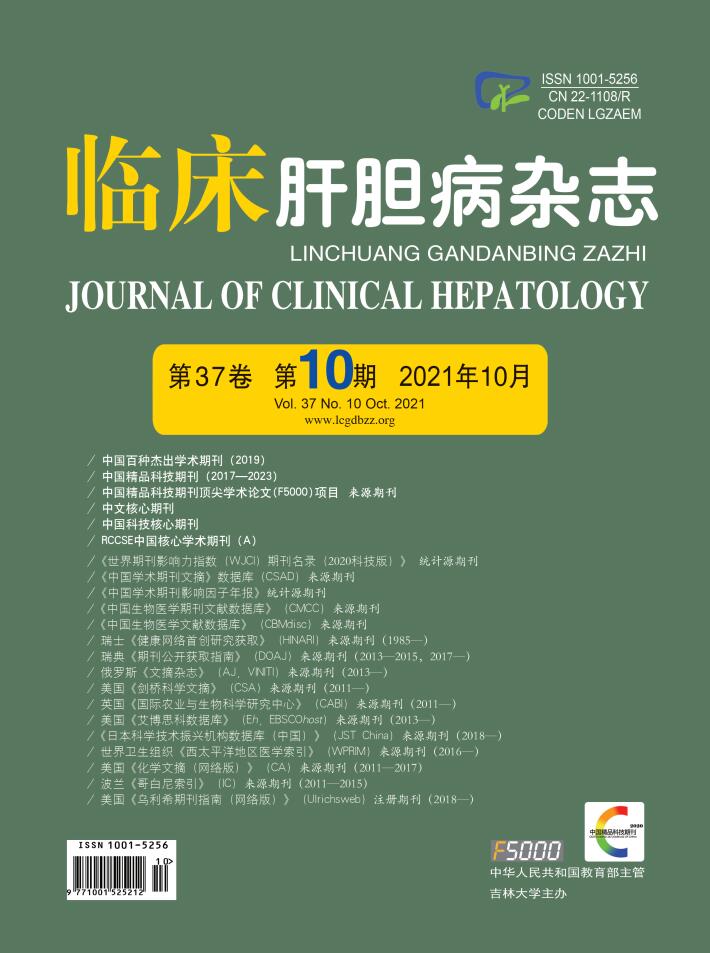| [1] |
CHEN YK. Preclinical characterization of the Spyglass peroral cholangiopancreatoscopy system for direct access, visualization, and biopsy[J]. Gastrointest Endosc, 2007, 65(2): 303-311. DOI: 10.1016/j.gie.2006.07.048. |
| [2] |
DERDEYN J, LALEMAN W. Current role of endoscopic cholangioscopy[J]. Curr Opin Gastroenterol, 2018, 34(5): 301-308. DOI: 10.1097/MOG.0000000000000457. |
| [3] |
XU W, MIAO L, WANG ZF, et al. Application of SpyGlassTM DS Direct Visualization System in the diagnosis and treatment of biliary tract diseases[J]. J Clin Hepatol, 2020, 36(11): 2626-2629. DOI: 10.3969/j.issn.1001-5256.2020.11.052. |
| [4] |
KARAGYOZOV P, BOEVA I, TISHKOV I. Role of digital single-operator cholangioscopy in the diagnosis and treatment of biliary disorders[J]. World J Gastrointest Endosc, 2019, 11(1): 31-40. DOI: 10.4253/wjge.v11.i1.31. |
| [5] |
YODICE M, CHOMA J, TADROS M. The expansion of cholangioscopy: Established and investigational uses of SpyGlass in biliary and pancreatic disorders[J]. Diagnostics (Basel), 2020, 10(3): 132. DOI: 10.3390/diagnostics10030132. |
| [6] |
NAVANEETHAN U, NJEI B, LOURDUSAMY V, et al. Comparative effectiveness of biliary brush cytology and intraductal biopsy for detection of malignant biliary strictures: A systematic review and meta-analysis[J]. Gastrointest Endosc, 2015, 81(1): 168-176. DOI: 10.1016/j.gie.2014.09.017. |
| [7] |
SHAH RJ, RAIJMAN I, BRAUER B, et al. Performance of a fully disposable, digital, single-operator cholangiopancreatoscope[J]. Endoscopy, 2017, 49(7): 651-658. DOI: 10.1055/s-0043-106295. |
| [8] |
TUROWSKI F, HVGLE U, DORMANN A, et al. Diagnostic and therapeutic single-operator cholangiopancreatoscopy with SpyGlassDS TM: Results of a multicenter retrospective cohort study[J]. Surg Endosc, 2018, 32(9): 3981-3988. DOI: 10.1007/s00464-018-6141-0. |
| [9] |
LENZE F, BOKEMEYER A, GROSS D, et al. Safety, diagnostic accuracy and therapeutic efficacy of digital single-operator cholangioscopy[J]. United European Gastroenterol J, 2018, 6(6): 902-909. DOI: 10.1177/2050640618764943. |
| [10] |
SUN X, ZHOU Z, TIAN J, et al. Is single-operator peroral cholangioscopy a useful tool for the diagnosis of indeterminate biliary lesion? A systematic review and meta-analysis[J]. Gastrointest Endosc, 2015, 82(1): 79-87. DOI: 10.1016/j.gie.2014.12.021. |
| [11] |
NAVANEETHAN U, HASAN MK, LOURDUSAMY V, et al. Single-operator cholangioscopy and targeted biopsies in the diagnosis of indeterminate biliary strictures: A systematic review[J]. Gastrointest Endosc, 2015, 82(4): 608-614. e2. DOI: 10.1016/j.gie.2015.04.030. |
| [12] |
de OLIVEIRA P, DE MOURA D, RIBEIRO IB, et al. Efficacy of digital single-operator cholangioscopy in the visual interpretation of indeterminate biliary strictures: A systematic review and meta-analysis[J]. Surg Endosc, 2020, 34(8): 3321-3329. DOI: 10.1007/s00464-020-07583-8. |
| [13] |
YASUDA I, ITOI T. Recent advances in endoscopic management of difficult bile duct stones[J]. Dig Endosc, 2013, 25(4): 376-385. DOI: 10.1111/den.12118. |
| [14] |
RAMCHANDANI M, REDDY DN, LAKHTAKIA S, et al. Per oral cholangiopancreatoscopy in pancreatico biliary diseases-expert consensus statements[J]. World J Gastroenterol, 2015, 21(15): 4722-4734. DOI: 10.3748/wjg.v21.i15.4722. |
| [15] |
BREWER GUTIERREZ OI, BEKKALI N, RAIJMAN I, et al. Efficacy and safety of digital single-operator cholangioscopy for difficult biliary stones[J]. Clin Gastroenterol Hepatol, 2018, 16(6): 918-926. e1. DOI: 10.1016/j.cgh.2017.10.017. |
| [16] |
ALJEBREEN AM, ALHARBI OR, AZZAM N, et al. Efficacy of spyglass-guided electrohydraulic lithotripsy in difficult bile duct stones[J]. Saudi J Gastroenterol, 2014, 20(6): 366-370. DOI: 10.4103/1319-3767.145329. |
| [17] |
ABURAJAB M, DUA K. Endoscopic management of difficult bile duct stones[J]. Curr Gastroenterol Rep, 2018, 20(2): 8. DOI: 10.1007/s11894-018-0613-1. |
| [18] |
BOKEMEYER A, GERGES C, LANG D, et al. Digital single-operator video cholangioscopy in treating refractory biliary stones: A multicenter observational study[J]. Surg Endosc, 2020, 34(5): 1914-1922. DOI: 10.1007/s00464-019-06962-0. |
| [19] |
SETHI A, CHEN YK, AUSTIN GL, et al. ERCP with cholangiopancreatoscopy may be associated with higher rates of complications than ERCP alone: A single-center experience[J]. Gastrointest Endosc, 2011, 73(2): 251-256. DOI: 10.1016/j.gie.2010.08.058. |
| [20] |
NGUYEN NQ. Getting most out of SpyGlass cholangio-pancreatoscopy: How and when?[J]. J Gastroenterol Hepatol, 2012, 27(8): 1263-1265. DOI: 10.1111/j.1440-1746.2012.07178.x. |
| [21] |
LALEMAN W, VERRAES K, VAN STEENBERGEN W, et al. Usefulness of the single-operator cholangioscopy system SpyGlass in biliary disease: A single-center prospective cohort study and aggregated review[J]. Surg Endosc, 2017, 31(5): 2223-2232. DOI: 10.1007/s00464-016-5221-2. |
| [22] |
NJEI B, MCCARTY TR, VARADARAJULU S, et al. Cost utility of ERCP-based modalities for the diagnosis of cholangiocarcinoma in primary sclerosing cholangitis[J]. Gastrointest Endosc, 2017, 85(4): 773-781. e10. DOI: 10.1016/j.gie.2016.08.020. |
| [23] |
ANG TL, KWEK A. Safety and efficacy of SpyGlass cholangiopancreatoscopy in routine clinical practice in a regional Singapore hospital[J]. Singapore Med J, 2019, 60(10): 538-544. DOI: 10.11622/smedj.2018158. |








 DownLoad:
DownLoad: